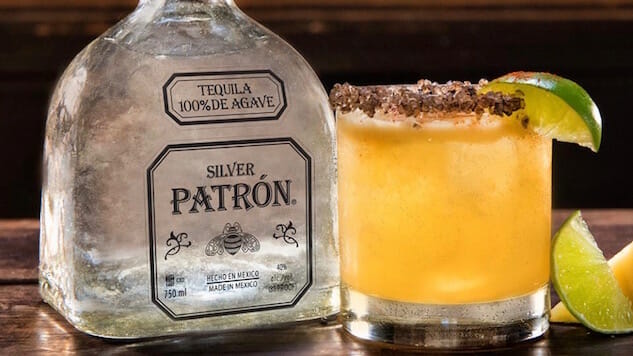Five Ways To Ruin A Margarita
Photo via Paron Tequila
The margarita is much more than just a tequila-filled lime concoction with a salted rim that you drink at happy hour at your local Mexican restaurant.
Traditionally, a margarita consists of tequila, orange liqueur, and fresh lime juice. “A little bit of sugar is usually added because that formula is too tart for many people’s palate,” says David Alan, manager of trade education and mixology at Patrón Tequila.
The basic margarita recipe is pretty simple, but “unfortunately over the years the recipe has been corrupted,” Alan says. Artificial mixers have often replaced the naturally flavored, simple classic.
The Margarita is Born
The drink originated in the American Southwest somewhere near the US/Mexican border in the 1930s and ‘40s. “There are a number of origin myths and stories, but they all contribute to the lore of the drink,” says Alan, “but it’s a tequila variation of the whiskey-based Daisy, a drink which was popular at the time.”
During Prohibition and directly after, there was a major shortage of whiskey. But, across the border in Mexico, the tequila was abundant. “A lot of Americans went across the border to enjoy Mexico’s drinking culture during Prohibition on this side,” Alan says. Since “Margarita” translates to “daisy,” it doesn’t take much of a stretch of the imagination to assume that a handful of bartenders could have made this logical leap and “invented” this cocktail in numerous locations.
More than Just a Salted Rim
“I think people have been burned by bad margaritas—heartburned, that is,” says Alan. Once you’ve tasted a fresh margarita, the taste of an artificially flavored cocktail sticks out like a sore thumb. “It’s cloying and makes you feel like you’re going to get a cavity just drinking it.” You can find these poorly made drinks at fine steakhouses and upscale clubs, where you’re paying way too much money to get a bad drink. Alan believes there are five ways to ruin a classic margarita. Try to avoid these common mistakes.
-

-

-

-

-

-

-

-

-

-

-

-

-

-

-

-

-

-

-

-

-

-

-

-

-

-

-

-

-

-

-

-

-

-

-

-

-

-

-

-








































